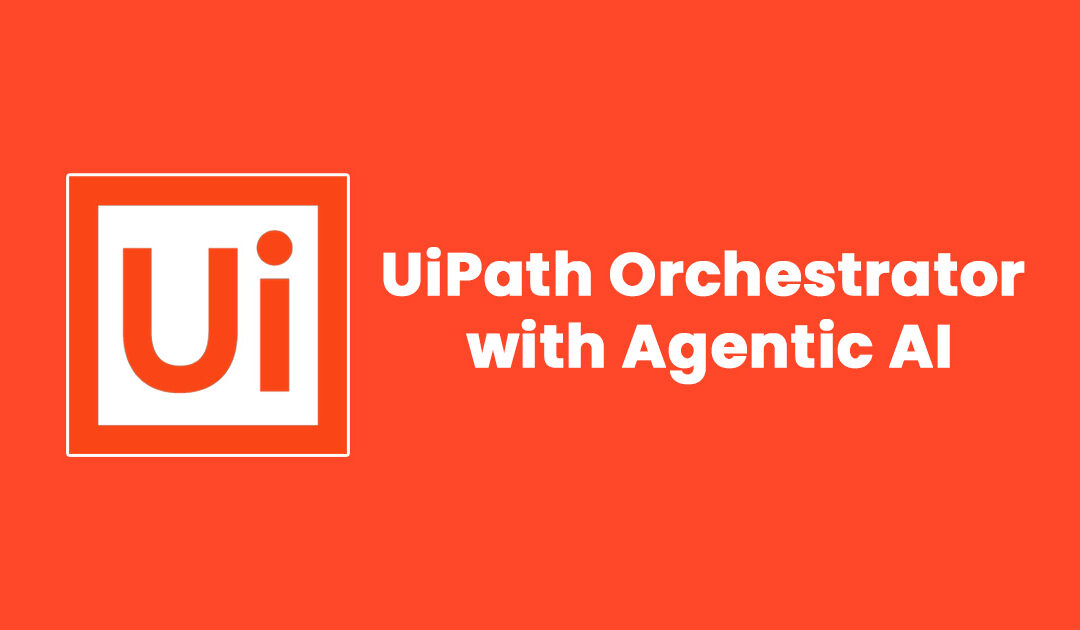In the context of UiPath’s integration with Agentic AI, the UiPath Orchestrator will play a pivotal role in managing, controlling, and monitoring the AI-driven processes. The Orchestrator will serve as the centralized platform that ensures both autonomous AI agents and traditional RPA robots work together seamlessly, maintaining oversight over complex workflows, and ensuring that all actions taken by AI agents are in line with business goals and compliance requirements.
Here’s how UiPath Orchestrator will be key in enabling Agentic AI integration:
1. Centralized Management of Autonomous AI Agents
- The UiPath Orchestrator will act as the command center for both traditional RPA bots and autonomous AI agents, allowing users to monitor and manage these entities in a unified environment.
- It will facilitate the coordination of workflows where AI agents make independent decisions while providing a central platform to track and log these activities for accountability.
2. Orchestration of Hybrid Workflows (RPA + Agentic AI)
- Agentic AI will work in tandem with existing UiPath bots to handle more dynamic tasks. The Orchestrator will be essential in orchestrating complex hybrid workflows where some steps are handled by RPA robots (rule-based, repetitive tasks), while more intelligent decisions or adaptive tasks are handled by autonomous AI agents.
- Example: In a procurement workflow, RPA robots might gather data and initiate basic tasks, while the AI agent, orchestrated by the Orchestrator, autonomously decides which vendor to choose based on real-time conditions like pricing and availability.
3. Monitoring, Logging, and Compliance
- One of the challenges with AI autonomy is the need for accountability, especially in industries where compliance and audit trails are critical. The Orchestrator will log all decisions made by Agentic AI, ensuring there is a clear record of what the AI did, when it did it, and why it made certain choices.
- This is important not only for compliance but also for troubleshooting and ensuring that autonomous AI actions are aligned with business rules and policies.
4. Control and Governance
- While AI agents will operate autonomously, organizations need a way to set boundaries and control the scope of these agents’ decision-making powers. The Orchestrator will provide the governance framework to define the rules and thresholds under which AI agents operate.
- For instance, the Orchestrator could define scenarios where human intervention is needed (e.g., financial decisions over a certain limit) or restrict the AI agent from making critical decisions without oversight.
5. Scaling Autonomous Agents
- The Orchestrator enables scalability by managing multiple AI agents across different processes or business units. It can prioritize tasks, allocate resources, and ensure the right AI agent or RPA bot is activated based on real-time demand.
- It ensures that businesses can deploy large numbers of AI agents in a controlled manner, avoiding overloading systems or causing conflicts between automated processes.
6. Human-in-the-Loop Coordination
- In many cases, especially when AI makes critical decisions, human-in-the-loop automation will be necessary. The Orchestrator will play a crucial role in routing tasks to humans when needed and ensuring that human intervention is smoothly integrated into the workflow.
- Example: If an autonomous AI agent is handling insurance claims, it might autonomously process 90% of cases, but for edge cases or higher-value claims, the Orchestrator could route the decision to a human operator for final approval.
7. Performance Analytics and Optimization
- Orchestrator will provide analytics and insights into the performance of AI agents, helping organizations optimize how these agents are used. This includes monitoring key metrics like decision accuracy, time savings, and ROI on automated processes.
- This data can help refine how Agentic AI is integrated into workflows, allowing for continuous improvement and adjustments based on performance.
8. Fault Handling and Exception Management
- AI agents, like any automated system, can encounter exceptions or failures. The Orchestrator will manage exception handling by either rerouting failed tasks to a human or another robot or by logging the failure for future analysis.
- This ensures that automation workflows remain robust and resilient, even when AI agents encounter edge cases or unexpected conditions.
9. Real-Time Monitoring and Alerts
- The Orchestrator will provide real-time monitoring and alerts for the actions taken by AI agents. This will be particularly important in high-stakes scenarios where the outcomes of an AI decision can have significant business or financial impacts.
- Users can set alerts for specific thresholds or conditions, such as when an AI agent escalates an issue or when it completes a critical task, ensuring that human operators are informed at key decision points.
10. Coordination of Multi-Agent Systems
- As UiPath integrates multi-agent systems where multiple autonomous AI agents collaborate, the Orchestrator will play a vital role in ensuring coordination between agents, preventing conflicts, and optimizing resource allocation.
- The Orchestrator will handle dependencies and task distribution between agents, ensuring that all agents are working toward a common goal efficiently.
Conclusion:
The UiPath Orchestrator will be the cornerstone of integrating Agentic AI into RPA workflows, providing the necessary control, visibility, and governance for autonomous AI agents. It will enable seamless coordination between AI agents and traditional RPA bots, manage human intervention when needed, and ensure compliance and accountability through logging and performance tracking.
As UiPath evolves toward incorporating more intelligent and independent AI capabilities, the Orchestrator will ensure that businesses can scale, monitor, and govern these AI-driven processes effectively, driving greater automation efficiency and innovation.

